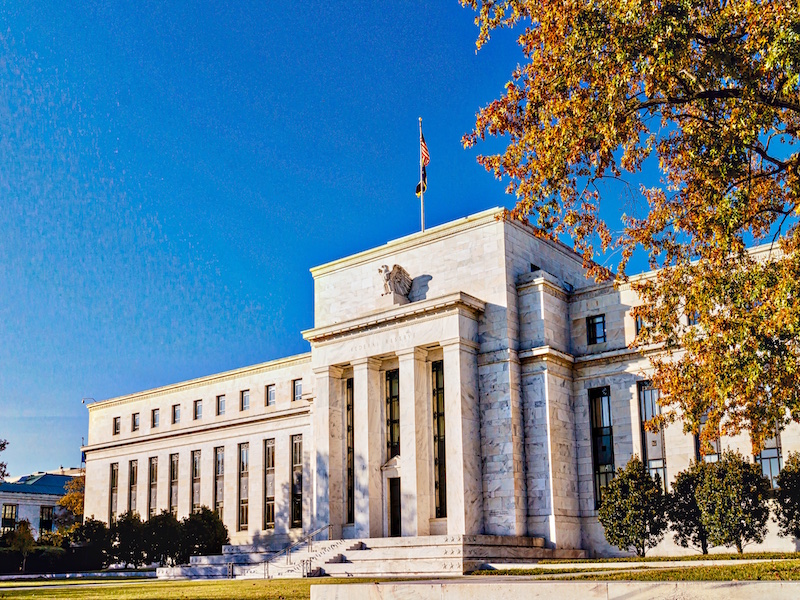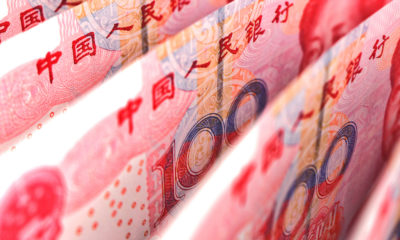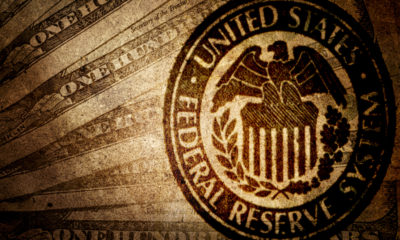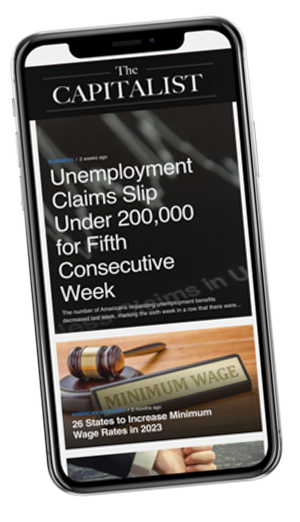bank
Fed Worries Over June Cash Crunch And Chinese Banks

The Fed bubble of 2008, has forced Shanghai to brace itself for the market turmoil.
The borrowing costs increase as the higher rates of the U.S. interests prospects coincides with an economic recovery which is credit-fueled.
This storm is to occur in the month of June, which has also been known to experience crunches of funding in China.
Here is the graph of China showing its' fluctuating interest rate over the years;

Reason for the failure
With the Federal Reserve tightening, the lending interest rate of the overnight interbank hit 1.99% in May hence weakening the Yuan.
These statistics reveal that the rate was increased by a whopping 0.81% since 2015 leading to the rallying of outflow capital pressures.
Lenders have been known to stock deposits before ‘quarter-end’ regulatory checks resulting to the climb of the borrowing expense every June over the past half-decade.
The fixing rate's cost spikes in the derivatives (swap in particular) market, as property indicated by data, set an investment rebound in the 2nd largest economy in the entire universe afloat.
[ms_divider style=”normal” align=”left” width=”100%” margin_top=”30″ margin_bottom=”30″ border_size=”5″ border_color=”#f2f2f2″ icon=”” class=”” id=””][/ms_divider]
[ms_featurebox style=”4″ title_font_size=”18″ title_color=”#2b2b2b” icon_circle=”no” icon_size=”46″ title=”Recommended Link” icon=”” alignment=”left” icon_animation_type=”” icon_color=”” icon_background_color=”” icon_border_color=”” icon_border_width=”0″ flip_icon=”none” spinning_icon=”no” icon_image=”” icon_image_width=”0″ icon_image_height=”” link_url=”https://offers.thecapitalist.com/p/warrenbuffet/index” link_target=”_blank” link_text=”Click Here To Find Out What It Said…” link_color=”#4885bf” content_color=”” content_box_background_color=”” class=”” id=””]Warren Buffett Just Told His Heirs What He Wants them To Do With His Fortune When He Dies. [/ms_featurebox]
[ms_divider style=”normal” align=”left” width=”100%” margin_top=”30″ margin_bottom=”30″ border_size=”5″ border_color=”#f2f2f2″ icon=”” class=”” id=””][/ms_divider]
Should Lenders be concerned?
The country's sixth-largest lender, China Merchants Bank Co Ltd, is not so promising about the bond market in the near future.
As stated by a senior analyst at the company, Liu Dongliang, based in Shenzhen, he also commented on the money market in June saying that the internal, as well as the external factors combined, will add pressure to it.
The cash crunch will make it harder to refinance a record amount of the debt maturing by the issuers because a bond market rout aggravated by the cash crunch, resulted in 190.6bn Yuan sales which this quarter canceled.
Over the past one year, the rate of the money from short-term (one-day) loans has been trending with the declining currency in tandem after a six-year surprising low touchdown.
The gauge compiled by Bloomberg shows that in the past year, the outflows estimated did hit the $1 trillion bar.
These statistics are much better reflected in the bar chart shown below which indicates the trend in rising in money rates and the drop in yuan:

Concern of the Fed
The Federal Reserve involved, clearly stipulated that the competence of the economy of the United Sates as by the evidence of the decline of the Yuan by 1.5%, tells of a borrowing costs increase in the upcoming months stated by the Federal Reserve chair, Janet Yellen.
The aggregate cost of an option for the single-year sovereign yield over the United States Treasuries declined to an almost two months low, even as the likelihood of the Fed action surged from 12% to 24%.
Incentives by the Banks
Among the banks, the PBOC (People's Bank of China) opts to;
- Control the decline of the Yuan with an incentive of keeping the conditions of the money relatively tight.
- Hope to in excessive rein in lending by the banks as well as curb the interest rates upsurges.
The governing body will then create for monetary;
- Neutral environment
- Appropriate environment.
The data still showed the CPI of the nation to be at a constant 2.3% acceleration for a 3rd month in April.
This pace hasn't been seen since the middle of 2014 and hence triggered comments especially from the DBS Bank strategist, EUGENE Low, who confirms the presence of aligning conditions of the Yuan.
He further states the factors below which contributed to a downtrend turn of events in the onshore interest rates:
- Higher inflation expectations
- The premium for regulatory needs for pricing.
- Prospect of Fed hikes
Focus of People’s Bank of China (PBOC)
The PBC has its focus on the utilization of short-term interest rates to dictate the long-term costs of borrowing.
This action caused by the removal of deposit rates cap over the past year has escalated the open market operations frequency from a couple of times each week to daily and managed to keep the benchmark repo rate of seven days at approximately 2.25%.
The authority is hoping space for further easing will be squeezed given the increase in the interest rate in the United States, and that’s more probable for bond yields to increase than decrease.
The graph below shows how the easing of the money by the PBOC increased the money supply (M1) as was supposed to grow by 15-16% ensuring the target of inflation in the medium term as of 2000.

Cash Injections
With the economy on fragile footing, the authorities acquired the adequate tools for injection of liquidity.
The PBOC has therefore put in place several measures constituting:
- Injection of capital into the financial system.
- Increasing up to 120 million, the reverse of the repo offering.
- Injecting 40 bn Yuan through a treasury deposit auction on the 27th of May.















